Tal (Bells): The Sound of Rohi
Tal (Bells): The Sound of Rohi
Grantee Profiles
Farjad Faiz
Faiz acquired a Masters degree in Fine Arts from Multan College of Arts Bahauddin Zakariya University, Multan, and completed his one-year diploma in video production from NCA, Lahore. He has participated in many national and international group shows. He is a Lecturer in UCAD, The Islamia University of Bahawalpur. He is also an independent curator and a research practitioner with publications in different research journals.
Maria Ansari
Ansari acquired a Masters degree in Fine Arts from Multan College of Arts Bahauddin Zakariya University Multan. She is currently the principal in University College of Art and Design at The Islamia University of Bahawalpur. As a fine artist she has participated in many group shows, and has published in different research journals.
Project
This research paper documents and discusses the process and the making of “Tal” special bells found in the region of Rohi, Southern Punjab.
Tal is part of the cultural heritage of this region, but now it is vanishing due to increase in industrialization and rising demands of uniform perfection through mechanized production. There is thus a decline in the demand and acceptance of handmade crafts accompanied by an apathy towards bell making as craft and its consequent significance as cultural heritage.
Rohi is the ancient and homegrown name for the Cholistan Desert in Pakistan. When the Hakra Valley was converted into a vast and extensive ocean of sand, the fertile and prosperous valley became buried under sand dunes. River Hakra was lost and thus came about this barren and desolate desert, Rohi.This region has been known by several names including Rohi, Thal, Maro and Cholistan. It is possible that the region, deprived of fertility, sterile with sandy soil, became a land unable to sustain its natives.
Tal (Bells) is a comparatively lesser known craft and today it is a dying craft of Rohi. Making metal bells for the animals is an essential craft of the Rohilas (the residents of Cholistani desert) who have reared animals as their means of livelihood since ages. Tied around the necks of their animals, the bells act as a means to identify, track and locate their camels, cows, bulls and goats, in the Rohi desert. Additionally the bells also add to the aesthetic of the desert, serving as a means of adornment for the animals and creating an enigmatic sound in the desert as the animals move around to graze. “When the sound of the bells mixes with the wind in the Rohi desert, it creates a musical rhythm and its melody fantasizes the whole environment.”
There is a wide range of bells each with their own sound, name and size according to the type and age of animals. They help the owners locate and track their animals. The bells made in Rohi were also used in Thal and Rajasthan in India. After the Indo Pak partition in 1947 and the consequent animosity between the two nations leading to a dwindling trade, the export of bells to Rajasthan is almost negligible. These bells are made by master craftsmen belonging to specific families native to the region. However the craft is dying due to decline in demand. Currently Rohila craftsmen of the bells are settled in the area of Sheikhwan near the Hasalpur and Khairpur Tamaywali. Sheakh Wahan is a small village that is located near Khairpur, Tamaywali in district Bahawalpur. Previously almost 600 families were involved in this business but today there are only a few families of ironsmith left who use the traditional way for making these bells.
The main reason for its decline of this craft is the conversion of the desert into fertile land which discourages free grazing. The local proprietor or investors use the land of the desert for fish farming and vegetation. Due to the utilization of desert land for farming, livestock are restricted to move freely and this results in a reduction for demands for bells which are used to track the animals while they are free gazing. The second reason is that the artisans of this craft are moving to bigger cities, because of the lack of livelihood, educational facilities and financial resources.
The bells serve two purposes. They serve primarily as a means of connection between a shepherd and his livestock while also being the means of interconnection between the animals of the herd. Through the sounds of bells the small animals are also connected with the lead animal of the herd. The shepherd leads his herd to the desert daily, where the animals are allowed to wander unsupervised in search of food while he waits for them to return. When the animals move the bells in their neck create a unique sound allowing the shepherd to track them. If an animal gets separated from the flock and goes astray, the sound of the bell makes it easy to locate.
Traditionally these bells were made in copper, bronze and iron. However due to shrinking markets cheaper alternatives like recycled iron began to be used in their making. Nowadays bells are mostly made with recycled iron sheet which is cheaper than the other materials available. Rohila craftsmen now use thick sheets of iron, pieces of brass, iron rives and nails. Long wooden rods cut from a local tree called Jand are used to power their furnaces for crafting the bells.
There are 2 main types of bells
Bells have been commonly used by shepherds across cultures and countries. However the craft of Bell making has continued to be practiced. In Switzerland for instance, bells have become integrated with their tourism industry acting as souvenirs which are highly sought by tourists as a mark of Swiss culture. This integration of the bell making into mainstream commercial practices sustains the financial condition of the craftsman and also encourages entrepreneurship.
This research is an effort for the survival of this craft and the artisan as well as highlighting the functional aspects of the bell for the shepherds and animals of Rohi. By documenting the process of bell making the research aims to preserve this knowledge while acknowledging and giving tribute to the dexterity and its craftsmen. The research also aims to demonstrate how these kinds of making practices are closely tied to the place and community.
The researchers being educators set out to make their own contribution to the promotion and development towards maturity within the craft. They did this by documentation of a dying craft and the process of bell making and the materials used in the making. They also documented the sounds of the bells. Through this they aim to lay the groundwork for further research and refinement of the bell making process and its sound in order to explore other potential areas of growth as seen in the example of Switzerland. They further aimed to understand the craft as a vital and feasible discipline that offers a vision for the future while paying attention to questions of ecology and sustainability and human, economic and social development.
Process of making Tal – bell
For more than seven generations, bells have been made by the residents of Sheikh Wan. They use junk – recycled iron sheets, refine it and cut it in small sizes according to various types of bells.
After shaping bells from the iron sheets, the bell makers wrap the bells with clay which works as mold. Flattening the wet clay like a plate, the artisan adds small copper pieces on and wraps the iron bells with it and then puts them out to dry. During the heating in the kiln, the copper pieces melt covering the iron bells and giving them a glittery golden color. The clay also aids in spreading the copper evenly across the surface of the iron bell.
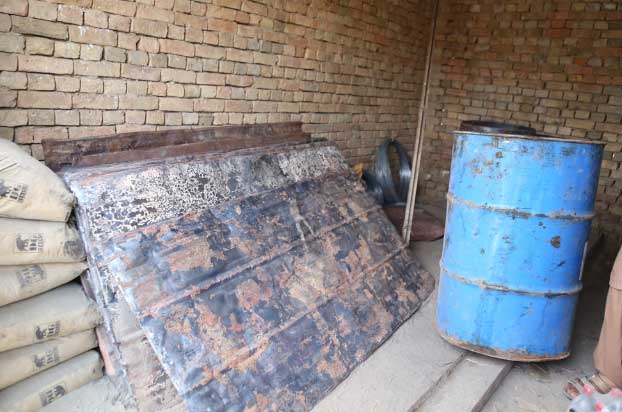
Image 1: Recycled material used in the production of of Tal – Bell
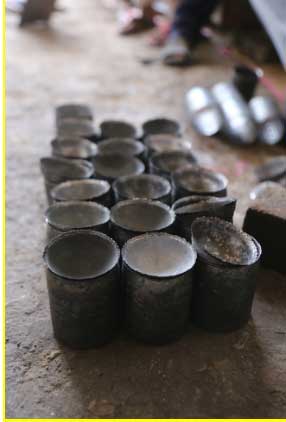
Image 2: Bells fashioned from the recycled material.
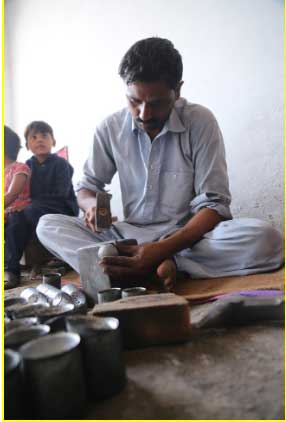
Image 3: Bells fashioned from the recycled material.
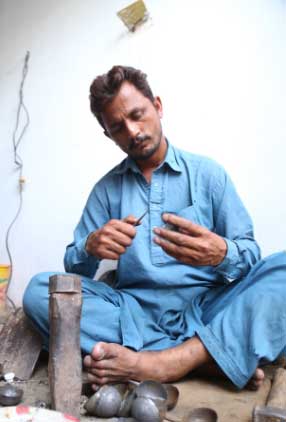
Image 4: Bells fashioned from the recycled material.
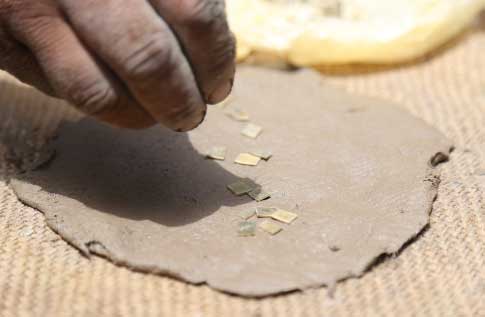
Image 5: Copper being added to clay moulds for a copper coating on the iron bells.
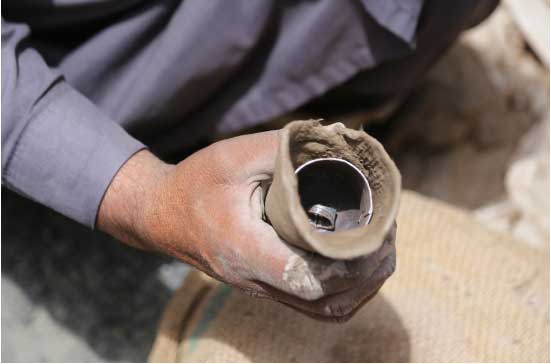
Image 6: Clay is used to wrap the iron bells.
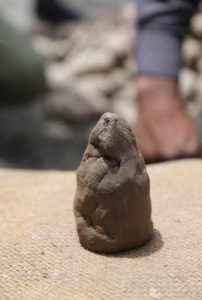
Image 7: Clay wraped iron bells are dried in the sun.
Next the artisan places the dry clay-coated bells in a kiln and bakes them for twenty to twenty-five minute, rotating them to heat the entire surface equally. This baking process makes the bells more solid and rotating the bells while baking helps to spread the golden color with copper pieces evenly all over the bell.
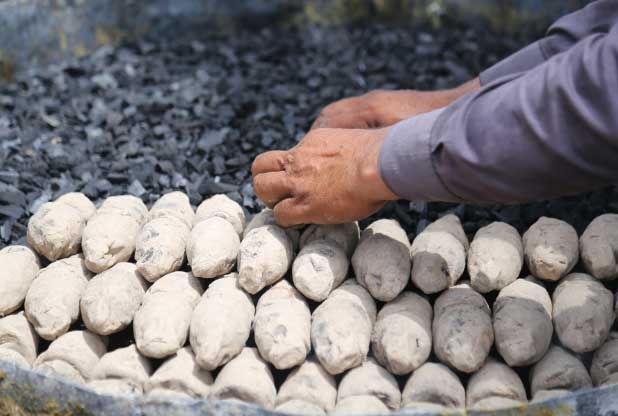
Image 8: Clay wraped iron bells being baked in the coal fueled kiln.
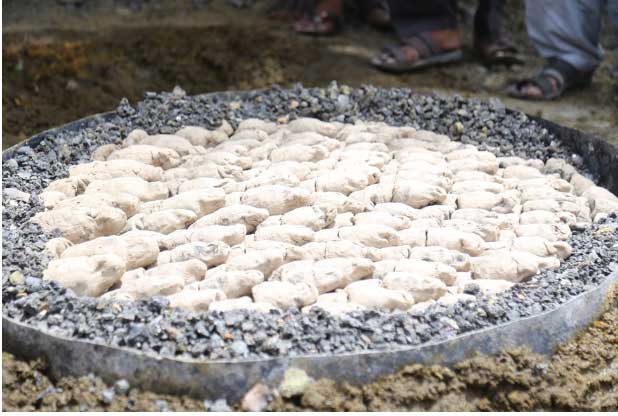
Image 9: Clay wraped iron bells being baked in the coal fueled kiln.
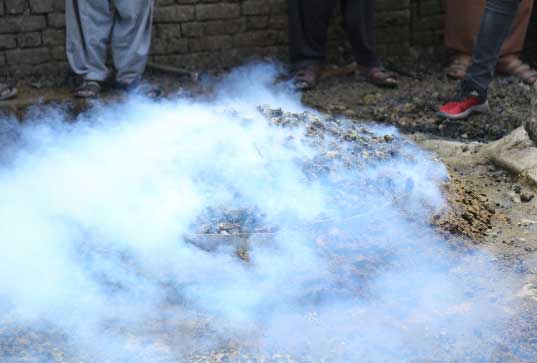
Image 10: Clay wraped iron bells being baked in the coal fueled kiln.
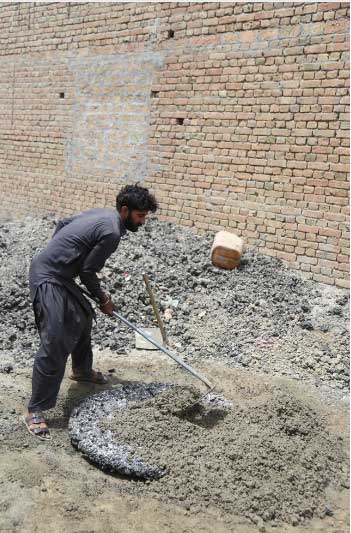
Image 11: Clay wrapped iron bells being baked in the coal fueled kiln.
After the bells have been baked and cooled to room temperature, the bell maker unwraps the bells which have now become covered with a layer of copper. A wooden clapper is now added to the bell in accordance with its size.
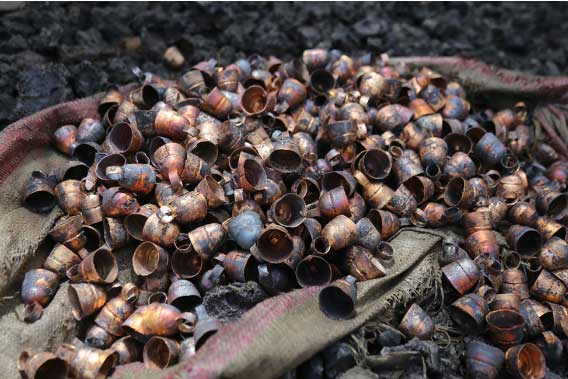
Image 12: Copper covered bells after being baked in the kiln

Image 12: addition of brightly coloured clappers
Sound Documentation
Bell type – Tali
Bell type – Chenni
Bell type – Ghanti
Bell type – Chanak
Bell type – Chan Chan
Bell type – Wadi Tali, Chay Ungali
Proposed application as Mobile Ringtones:
TAL Ringtone 1:
TAL Ringtone 2:
TAL Ringtone 3:
TAL Ringtone 4:
The ringtone sounds are mainly of the bell type Tal, which is tied on the main animal of the herd. Other sounds that can be heard are of smaller bells tied to the other animals in the herd depending on their type. The other bealls that can be heard in these ringtones are, Cheeni, Chanchan and Charakni.
Conclusion:
This study concludes that there are many reasons for the decline of the craft of bell making. The partition of India and Pakistan decreased its demand because the desert was also divided into Rajasthan and Cholistan and Rajasthan is larger than Cholistan. The fertilization in the desert has also diminished the ecosystem of the desert. Also the quality of the bells is not very good therefore limiting their scope as souvenirs. Furthermore currently there is limited facilitation for tourists and there is a need to look for alternatives beyond the Swiss example.
The researchers propose that alongside the preservation of the craft of bell making, an archive of the sound of the bell should also be created. This can be used in multiple applications including ringtones for mobiles. Preserving sounds and their commercial application can also spark an interest in the sounds of the bells while opening the field to further sound explorations. This can serve to stimulate an interest in the craft of bell making by opening up new vistas for its application.
Reference:
Niedderer Kristina, 2014 Craft Research: Joining emotion and Knowledge.
Vandel Sajda, 2011 Cultural Expression of South Punjab, Print Gallery Lahore
Interviews of locals
Interview of Dr. Abdullah, Director of Bio Diversity Park, Cholistan The Islamia University of Bahawalpur.
Photography Credits: Mr. Farjad Faiz